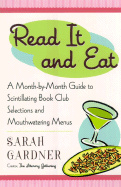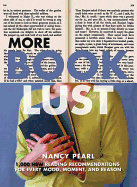What to Read When You Don’t Know What to Read
August 1st, 2014
Carole · Staff Recommendations
It’s been around for ages. We do it every day. It starts in our earliest years and continues throughout our lives. It teaches, it transports, it transforms. You’re doing it now.
It’s Reading.
Are you always looking for something new to read? Do you always have at least 2 books going at the same time, one on your e-reader, one by your bed? Do you want to break out of your reading rut? Do you need reading advice?
Your local librarian is a great source for reading recommendations but did you know that many useful and entertaining books have been written on the subject of what to read? Akin to successful food writing and travel writing, good “book writing” captures the essence of a character, setting or story while conveying the impact and significance the book has had on its reader.
 In So Many Books So Little Time: A year of Passionate Reading, Sara Nelson confesses that she was not the proverbial bookworm growing up. Books had their place in her life, but not an exclusive place. She enjoyed a busy social life along with reading as an adolescent and young adult. It wasn’t until she moved to NY, alone, and joined her local library that she acquired a new awareness of literature. That’s when reading really took root for Ms. Nelson and it has never let go. She found that books were an inexpensive and unexpected form of entertainment and appreciated the retreat that books offered. Interestingly she notes that the busier and fuller her life became, the more she looked forward to and made time for reading. The germ for the book began with an ambitious project she laid out for herself: read a book a week for 52 weeks. Can she? What books will she choose? Why such an objective? This is a great stand-alone read that offers suggestions and meaningful observations throughout.
In So Many Books So Little Time: A year of Passionate Reading, Sara Nelson confesses that she was not the proverbial bookworm growing up. Books had their place in her life, but not an exclusive place. She enjoyed a busy social life along with reading as an adolescent and young adult. It wasn’t until she moved to NY, alone, and joined her local library that she acquired a new awareness of literature. That’s when reading really took root for Ms. Nelson and it has never let go. She found that books were an inexpensive and unexpected form of entertainment and appreciated the retreat that books offered. Interestingly she notes that the busier and fuller her life became, the more she looked forward to and made time for reading. The germ for the book began with an ambitious project she laid out for herself: read a book a week for 52 weeks. Can she? What books will she choose? Why such an objective? This is a great stand-alone read that offers suggestions and meaningful observations throughout.
 Choosing what to read as a means of gaining insight into or coping with life’s challenges is not a novel idea (pun intended). Endurance through literature is the essence of Bibliotherapy: The Girl’s Guide to Books for Every Phase of Our Lives by Nancy Peske and Beverly West. With chapters entitled “When You’re Ready to Make Your Own Kind of Music” and “When You’re Feeling Unnoticed and Unloved” the authors mine the literature troves for titles that can help through all of life’s crises and phases: Midlife Crisis books, Mother-Issue Books, Bad Boys Books. Don’t be misled by the lighthearted tone. This book offers up a wide variety of reading suggestions including, in the chapter “When You’re Feeling Alienated, Marginal, Iconoclastic, and Obsessed with the Underbelly: Existential Crisis Books”, Post Office by Charles Bukowski, The Stranger by Camus, and Joyce’s Ulysses.
Choosing what to read as a means of gaining insight into or coping with life’s challenges is not a novel idea (pun intended). Endurance through literature is the essence of Bibliotherapy: The Girl’s Guide to Books for Every Phase of Our Lives by Nancy Peske and Beverly West. With chapters entitled “When You’re Ready to Make Your Own Kind of Music” and “When You’re Feeling Unnoticed and Unloved” the authors mine the literature troves for titles that can help through all of life’s crises and phases: Midlife Crisis books, Mother-Issue Books, Bad Boys Books. Don’t be misled by the lighthearted tone. This book offers up a wide variety of reading suggestions including, in the chapter “When You’re Feeling Alienated, Marginal, Iconoclastic, and Obsessed with the Underbelly: Existential Crisis Books”, Post Office by Charles Bukowski, The Stranger by Camus, and Joyce’s Ulysses.
 A unique twist can be found in Read It and Eat written by down-to-earth book lover Sarah Gardener, who strives to keep the enjoyment of reading as the main focus of her selections. She speaks of enduring the criticism of literature professors who deemed she was not serious enough about the written word to make a living teaching about it. Among her suggestions are non-fiction titles, classics and breezy reads, but books that she struggled to finish are not included, regardless of their literary merit. The book is divided into 12 sections that correspond to the 12 months of the year. These are followed by 4 bonus chapters. Each book mentioned is followed by points of discussion. The allure of this book, and a feature that will appeal to book groups, is that recipes are included in each section. Gardner promises that each menu is related to the regional setting, time period or an occasion mentioned in the book or includes a character’s favorite food.
A unique twist can be found in Read It and Eat written by down-to-earth book lover Sarah Gardener, who strives to keep the enjoyment of reading as the main focus of her selections. She speaks of enduring the criticism of literature professors who deemed she was not serious enough about the written word to make a living teaching about it. Among her suggestions are non-fiction titles, classics and breezy reads, but books that she struggled to finish are not included, regardless of their literary merit. The book is divided into 12 sections that correspond to the 12 months of the year. These are followed by 4 bonus chapters. Each book mentioned is followed by points of discussion. The allure of this book, and a feature that will appeal to book groups, is that recipes are included in each section. Gardner promises that each menu is related to the regional setting, time period or an occasion mentioned in the book or includes a character’s favorite food.
 The selections in A Year of Reading: A Month-by-Month Guide to Classics and Crowd Pleasers for You or Your Book Group reflect a broad monthly theme. Within the theme are 5 diverse categories: Crowd Pleasers, Classics, Challenges, Memoirs and Potluck. If you only want to read memoirs, you will find one for each month of the year. The inclusion of the sections “What is this book about”, “What should I know about the author” and “Questions for reflection or discussion” make this book exceptionally comprehensive and thorough.
The selections in A Year of Reading: A Month-by-Month Guide to Classics and Crowd Pleasers for You or Your Book Group reflect a broad monthly theme. Within the theme are 5 diverse categories: Crowd Pleasers, Classics, Challenges, Memoirs and Potluck. If you only want to read memoirs, you will find one for each month of the year. The inclusion of the sections “What is this book about”, “What should I know about the author” and “Questions for reflection or discussion” make this book exceptionally comprehensive and thorough.
Additional Suggestions, both by Nancy Pearl:
Happy Reading!

